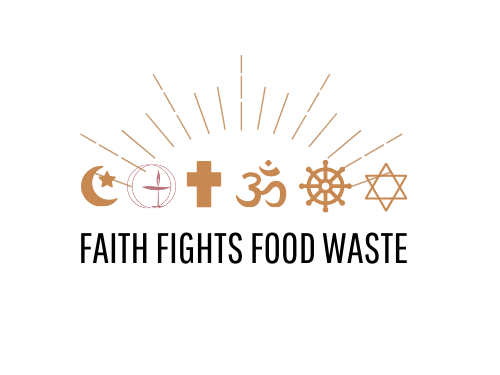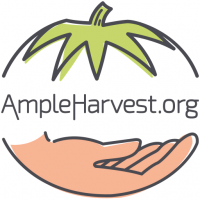Food Waste Weekend
Quiz Show Lesson Plan
Age Range
This quiz show lesson plan is designed for children between the ages of 10-15.
Materials Required
- Index cards
- A sheet of newsprint
- Color markers
- Construction paper
We recommend that teachers write out each question on a special “Question Card” and create a scorecard on a sheet of newsprint so that they can keep score.
We also recommend that children on each team be given the use of color markers and construction paper where they can draw a color logo of their own team.
Directions
Divide members of the class into two or three teams and invite each team to think of a name for their team that has something to do with the name of a fruit or vegetable. Before starting to answer the questions, the children should draw a colorful logo for their team, using their fruit or vegetable and a symbol from their religion or faith.
Share with all those present that they will be taking part in a quiz show on the topic of food waste, and that they should follow these instructions:
- Each team will provide an answer to each question. After each team has provided its answer, the teacher will share the correct answer and read the educational explanation.
- Team members should decide together on their answer to each question.
- A different team member should be chosen to give the answer to each question.
- Each question is worth ten points. The teacher will keep track of the number of points that each team has.
Questions
- How much of the world’s food is wasted each year?
- 10%
- 20%
- 30%
Answer: C. According to the Food and Agriculture Organization (FAO) of the United Nations, “one-third of food produced for human consumption worldwide is annually lost or wasted along the chain that stretches from farms to processing plants, marketplaces, retailers, food-service operations, and our collective kitchens.” This wastage totals 2.8 trillion pounds, enough to feed three billion people.[1]
- In the United States, how much food does the average family waste each year?
- 500 pounds
- 750 pounds
- 1,000 pounds
Answer: C. According to National Geographic Magazine, “Spills, spoilage, table scraps, and other losses from the typical American family of four add up to 1,160 pounds of uneaten food annually.” This represents 1.2 million calories that the average family leaves uneaten every year valued at over $1,400 —more than enough to feed another person.[2]
- Each day in the US, how much food is wasted?
- Enough food to fill Radio City Music Hall, where the Rockettes perform their annual holiday show in New York City (seating capacity: 6,015 people)?
- Enough food to fill the Staples Center in Los Angeles, where the Los Angeles Lakers play basketball (seating capacity: 18,118 people)?
- Enough food to fill the Rose Bowl, where the University of Southern California plays football (seating capacity: 92,542 people)?
Answer: C. And, the amount of food wasted is growing. According to the Environmental Protection Agency, “food waste has increased dramatically, rising 50 percent between 1974 and 2003, and recently replaced paper as the largest single component in our landfills.”[3]
- How much land is used to grow food that is wasted each year?
- 60 million acres – the size of the United Kingdom
- 2 billion acres – the size of Australia
- 5 billion acres – the size of Canada
Answer: C. The sad thing? Not only does this represent a waste of the food and the use of the productive land, but also of the massive amounts of water, fertilizer, agricultural chemicals, and labor used to grow this wasted food.[4]
- How much water is wasted each year due to the wasted food?
- As much water as flows each year from the Hudson River in New York?
- As much water as flows each year from the Volga River in Europe?
- As much water as flows each year from the Nile River in Egypt?
Answer: B. The Volga River, Europe’s largest river, discharges over 8,000 cubic meters of water every second.[5] Every year, food waste is responsible for approximately the same amount of water discharged from the Volga in a year[6] – almost three million cubic meters. Of the three rivers mentioned here, the Volga is the largest.
- What are the main ways in which food is wasted?
- People buy more than they consume, and throw away the food that they do not eat.
- Fruits and vegetables rot in the farm fields because they are not picked.
- Fruits and vegetables rot in home and community gardens because the gardener grew more than they could use, preserve or share with friends
- Food spoils or goes rotten while it is being transported to stores, or in stores, because of lack of refrigeration.
- Stores throw out fruits and vegetables which have blemishes or odd-looking shapes because they don’t think people will buy them.
- All of the above.
Answer: F. Each of these is a major contributor to food waste.[7]
- What can every family do to reduce their food waste?
- Eat leftovers and throw away less food at home.
- Bring home uneaten food from restaurants, and eat it at home.
- Give excess garden food to a nearby food pantry
- Be willing to buy and eat fruits and vegetables that are differently shaped.
- All of the above.
Answer: E. By taking each of these steps, households can dramatically reduce the amount of food they waste each year.
- Greenhouse gas emissions – which are carbon dioxide, methane, and other invisible gases – cause climate change, also known as global warming. Food waste is responsible for a large amount of greenhouse gas emissions. How?
- Food that is thrown out rots in landfills and dumps, where it releases a lot of methane.
- Growing food requires a lot of energy. Tractors on farms use fuel. Water has to be pumped from ponds, lakes and water storage areas. Trucks that drive food from farms to markets use gasoline. All of these uses of energy releases greenhouse gas emissions.
- Packaging food to uses energy, which creates greenhouse gas emissions. When food is wasted, that energy goes to waste.
- All of the above.
Answer: D. According to National Geographic Magazine, “Producing the food we throw away generates more greenhouse gases than most entire countries do. … If food waste were a country, it would be the world’s third largest emitter of greenhouse gases, behind the U.S. and China.”[8]
- What does our faith or religion teach about our responsibility to help those who suffer from hunger?
Answer: The teacher should ask each team to write down an answer and to read it aloud.
- Where can I go to find a food pantry that I can take excess garden and store food to?
Answer: The teacher should ask each team to visit www.AmpleHarvest.org, pretend that they are a gardener, and find the nearest food pantry. Additionally, the teacher should invite students to visit www.AmpleHarvest.org/local if they know about a food pantry that they could not find on AmpleHarvest.org or know about gardeners who grow food.
- What does our faith or religion teach about our responsibility to protect the environment?
Answer: The teacher should ask each team to write down an answer and to read it aloud.
At the end of the Quiz Show, the teacher should read a passage from the sacred text of their religious tradition, or should offer a prayer for those who are hungry and for the protection of the earth.
Written by GreenFaith. Free for use and distribution with attribution.
[1] http://news.nationalgeographic.com/news/2014/10/141013-food-waste-national-security-environment-science-ngfood/
[2] http://news.nationalgeographic.com/news/2014/10/141013-food-waste-national-security-environment-science-ngfood/
[3] https://www.washingtonpost.com/in-united-states-theres-a-lot-of-food-being-wasted/2012/06/19/gJQAmk9JoV_story.html
[4] http://news.nationalgeographic.com/news/2014/10/141013-food-waste-national-security-environment-science-ngfood/
[5] https://en.wikipedia.org/wiki/List_of_rivers_by_discharge
[6] http://www.fao.org/news/story/en/item/196220/icode/
[7] http://news.nationalgeographic.com/news/2015/01/150122-food-waste-climate-change-hunger/
[8] http://news.nationalgeographic.com/news/2015/01/150122-food-waste-climate-change-hunger/

